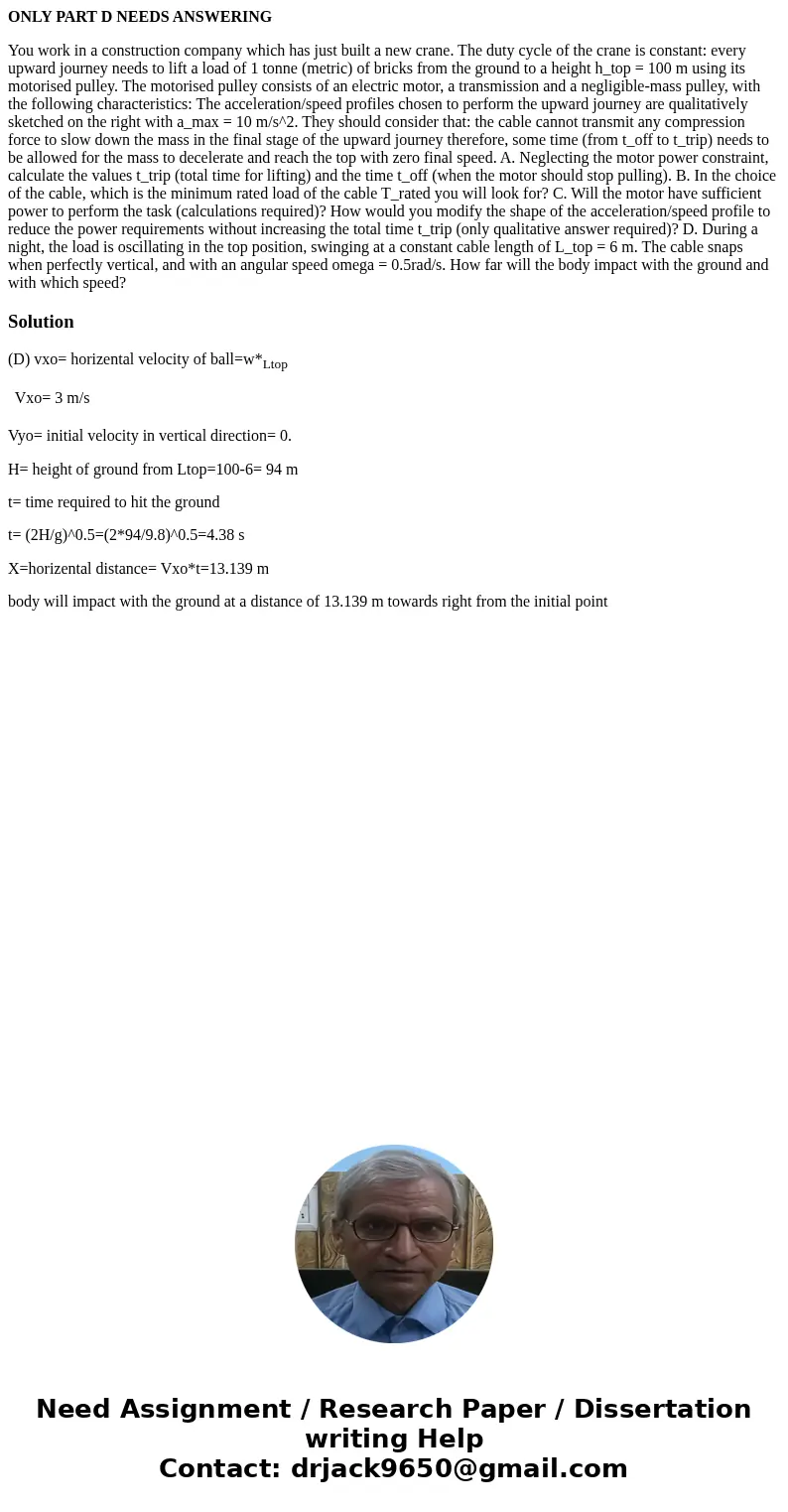ONLY PART D NEEDS ANSWERING You work in a construction compa
ONLY PART D NEEDS ANSWERING
You work in a construction company which has just built a new crane. The duty cycle of the crane is constant: every upward journey needs to lift a load of 1 tonne (metric) of bricks from the ground to a height h_top = 100 m using its motorised pulley. The motorised pulley consists of an electric motor, a transmission and a negligible-mass pulley, with the following characteristics: The acceleration/speed profiles chosen to perform the upward journey are qualitatively sketched on the right with a_max = 10 m/s^2. They should consider that: the cable cannot transmit any compression force to slow down the mass in the final stage of the upward journey therefore, some time (from t_off to t_trip) needs to be allowed for the mass to decelerate and reach the top with zero final speed. A. Neglecting the motor power constraint, calculate the values t_trip (total time for lifting) and the time t_off (when the motor should stop pulling). B. In the choice of the cable, which is the minimum rated load of the cable T_rated you will look for? C. Will the motor have sufficient power to perform the task (calculations required)? How would you modify the shape of the acceleration/speed profile to reduce the power requirements without increasing the total time t_trip (only qualitative answer required)? D. During a night, the load is oscillating in the top position, swinging at a constant cable length of L_top = 6 m. The cable snaps when perfectly vertical, and with an angular speed omega = 0.5rad/s. How far will the body impact with the ground and with which speed?Solution
(D) vxo= horizental velocity of ball=w*Ltop
Vxo= 3 m/s
Vyo= initial velocity in vertical direction= 0.
H= height of ground from Ltop=100-6= 94 m
t= time required to hit the ground
t= (2H/g)^0.5=(2*94/9.8)^0.5=4.38 s
X=horizental distance= Vxo*t=13.139 m
body will impact with the ground at a distance of 13.139 m towards right from the initial point

 Homework Sourse
Homework Sourse